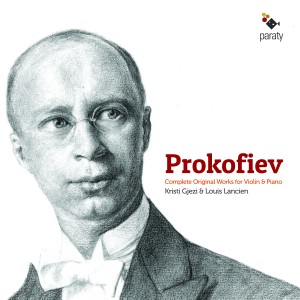
Where do the sonatas for violin and piano fit into the chronology of Prokofiev’s catalogue?
The two sonatas date to the final part of Prokofiev’s career, its Soviet period. In 1918, he left his country of birth for the United States, and then for Europe, before returning definitively to the Soviet Union at the end of 1932. The first sonata, the Sonata in F Minor op. 80, was drafted in the United States in 1938 and completed in 1946, while Prokofiev had completed the second sonata op. 94 in Moscow three years earlier, in 1943, in its original version intended for the flute.
And to conclude?
To top off our work on this great composer, revolutionary for some, neo-classical for others, harassed by the totalitarian censorship of the Stalin regime and Andrei Zhdanov who curtailed artistic freedom, we would say that Prokofiev was twice a victim of Stalin. He died on 5 March 1953, the same day as the “little father of the peoples”, and almost at the same time. It is for this reason that his passing went virtually unnoticed and that his funeral was held with an almost universal indifference. To conclude, what attracts us to Prokofiev is his taste for melody, the typically Russian melodic freshness that he found in folklore, because it seems to us that Prokofiev was first and foremost a melodist.

